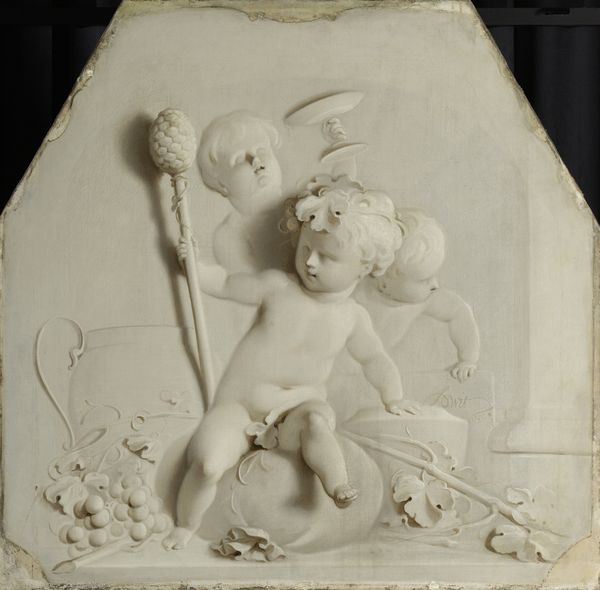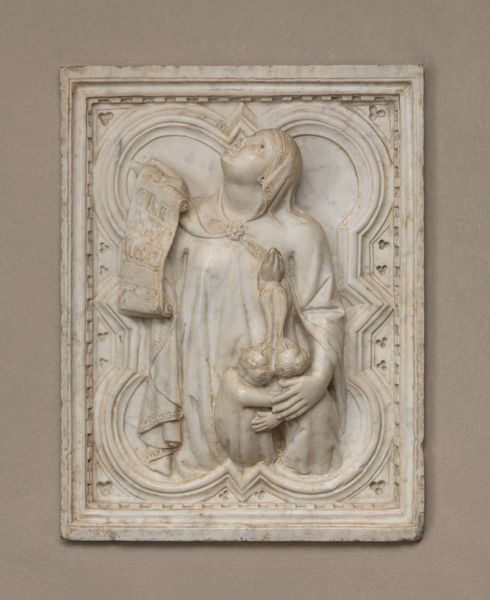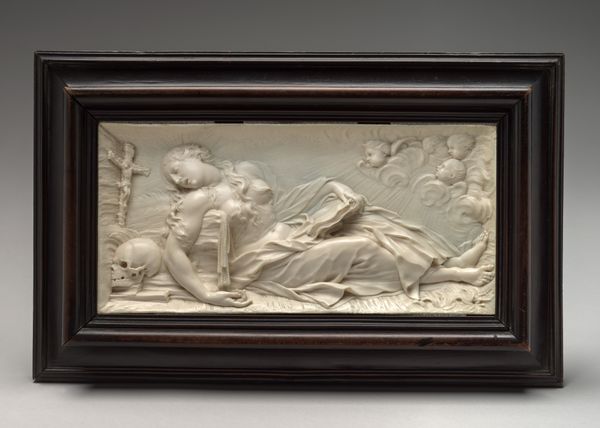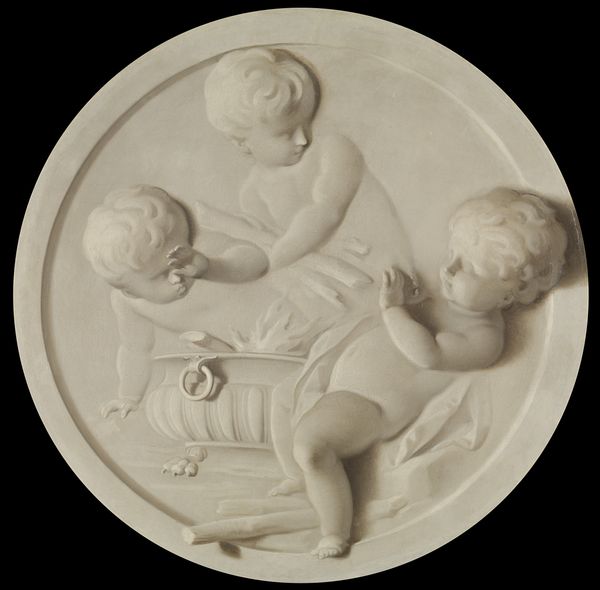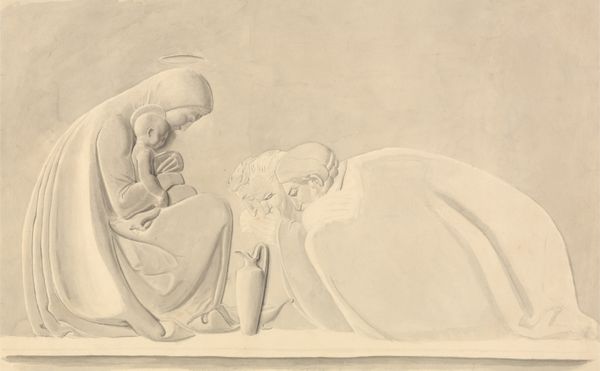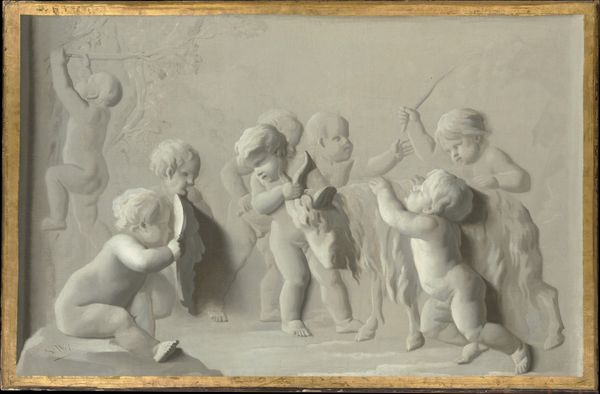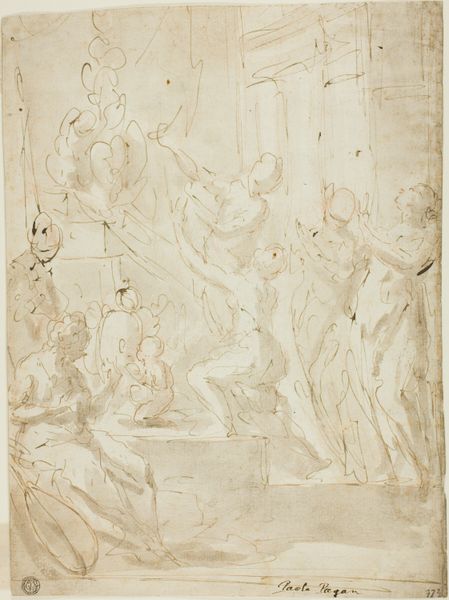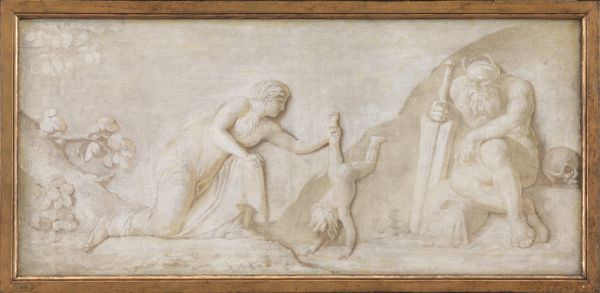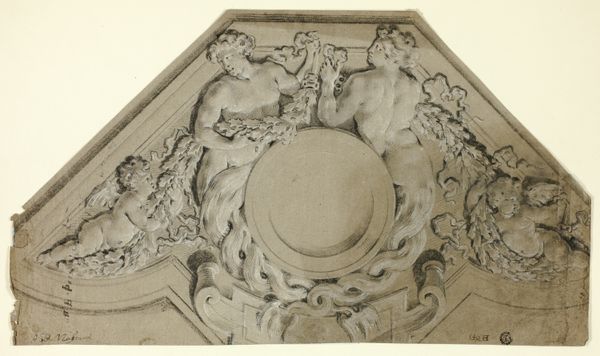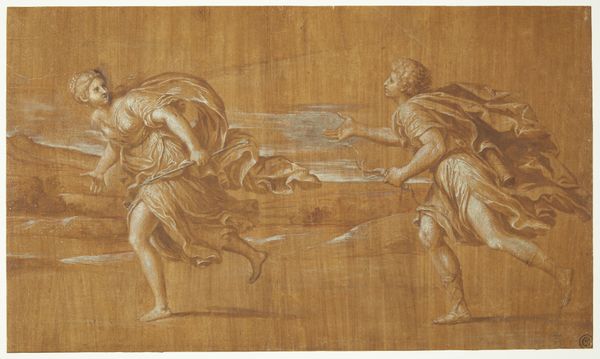
carving, alabaster, relief, sculpture
#
carving
#
baroque
#
sculpture
#
alabaster
#
relief
#
charcoal drawing
#
figuration
#
sculpture
#
genre-painting
#
charcoal
#
statue
Dimensions: height 109 cm, width 110.5 cm, weight 8.6 kg
Copyright: Rijks Museum: Open Domain
Jacob de Wit created this chalk manner drawing called "Summer," sometime between 1695 and 1754. De Wit, a master of illusionistic ceiling painting, often blurred the lines between painting and sculpture. This work reflects a longstanding Western tradition of allegorizing the seasons, where "Summer" is embodied by youthful figures amidst symbols of harvest. The cherubic children carry freshly cut wheat and cradle pumpkins, maize and gourds, bounties of a fruitful summer. The artist's choice to depict children evokes a sense of innocence and purity, linking the season to themes of growth and abundance. Historically, such representations were commissioned by wealthy patrons to celebrate their dominion over nature and their access to its riches. Yet, there’s also an emotional accessibility in de Wit’s soft chalk rendering. It is through the cherubic figures and muted tones that a sentimentality of the season is evoked, which may speak to the universal experience of summer’s warmth and plenty.
Comments
rijksmuseum about 2 years ago
⋮
The provenance of this overdoor is the same as that of Autumn and Winter, also on view in this gallery. Unfortunately, Spring has not come down to us, but it was probably round, like Winter. As in the other overdoors, three putti play with various attributes. The scythe, the cornstalks and the harvested fruit allude to summer.
Join the conversation
Join millions of artists and users on Artera today and experience the ultimate creative platform.
